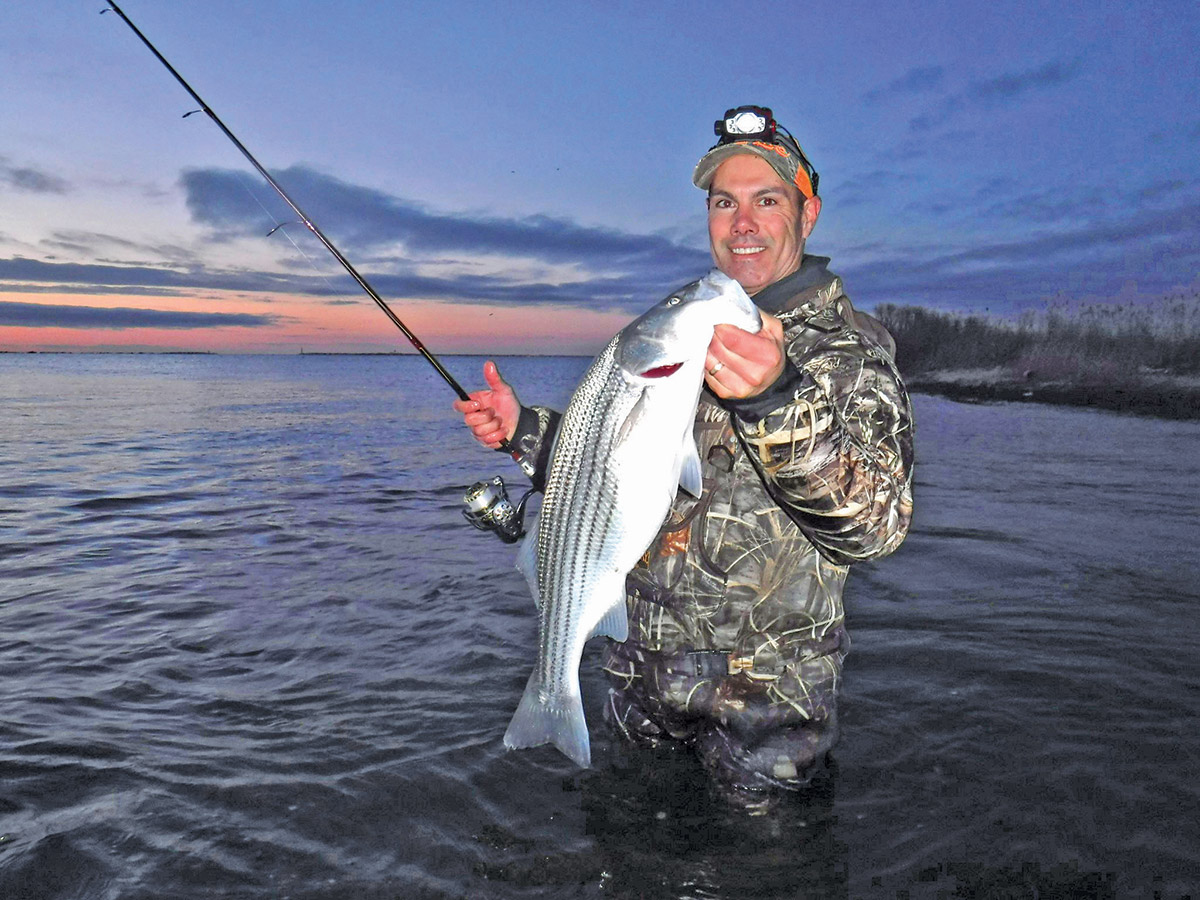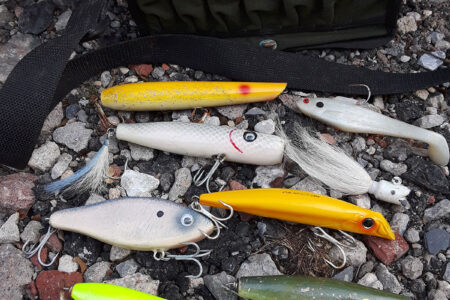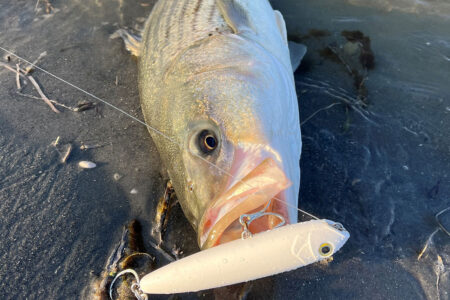
Don’t be so quick to write off August as long as you are willing to work the midnight to dawn shift.
Traces of moonlight filtered through a mostly cloud covered sky while a southerly breeze blew hard enough to make the night mosquito free, but not enough to disturb the inlet’s surface thanks to the elevated shoreline at my back. Here and there that surface would be interrupted by a feeding striper. I was hip deep on a sandy shelf with no one to my left or right. In the spring or fall there would likely have been a squad of casters spread across the shelf, but now, in the midst of a 90-degree heat wave in the middle of the eighth month, most surfcasters were tucked into their air conditioned bedrooms fast asleep.
It took some effort to not be in that same position. I thought about it as I loaded my gear into the truck, with droplets of sweat dripping down my cheeks. July had been a hot one, and there was hardly a reprieve in August. I was tiring of playing with fluke on daytime tides, and most days were too hot to spend much time on the boat. A friend had clued me into action he had been enjoying for the better part of a week. He was headed out of town on a family vacation but suggested I check it out.
When I arrived in the empty parking lot the air was pleasantly cool, a far cry from the humid heat of the mainland. I grabbed a sweatshirt from the back of the truck and pulled it over my T-shirt. A pair of light-weight waders made the short walk to the water surprisingly pleasant. “Not bad,” I thought. It would get better. The action was made up of schoolies topping out at around 12 pounds, with a couple of fish nudging the 15-pound mark. They were a great match for the 7-footer spooled with 15-pound braid that I was carrying, and they eagerly walloped the selection of swimming plugs and soft plastics I was serving. The fish fed until the last trickle of incoming water faded, and two hours of standing in the cooler ocean water carried by the incoming tide had left me with a chill.
That night has led to many more midsummer night trips during the heat of July and August. Not all were as successful, but some delivered more. There were big fish nights, fishless nights, and nights when that protective breeze died, and the mosquitoes fed well. The summer doldrums don’t have to mean hanging up the surf gear until the first northerlies blow in September. The key is to pick the right nights. No one enjoys being dive bombed by mosquitoes but there are nights with a good breeze from the right direction when the threat can be mostly eliminated.
Find an inlet or breachway and scout the area in the daytime. Be alert to signs of bait. Having snappers present is a good sign and if they are feeding on smaller bait, even better. A major key to success is fishing these areas during the latter stages of an incoming current when cooler ocean water floods through and into a bay or pond. The water in the bays during mid-summer can climb into the 80s, not exactly prime habitat for striped bass, but the fish are likely to feed for a brief period when the water is coolest. Fish will linger in the deeper sections of inlets or spend time out in the cooler ocean waters but will often move shallow to feed as that cooler water pushes through.
Summer nights are short and prime tides are even shorter. As a result, these are not your marathon trips of the fall. And since the best fishing often occurs well after the sun sets, we are really talking about that period from 11 p.m. to the pre-dawn hour. Factor in the last couple of hours of the incoming currents and you are down to trips lasting just a few hours. Yes, there have been exceptions when the bite began earlier in the tide or lasted through the turn and into the outgoing, but don’t expect it. So when you’ve had enough of breathing reconditioned air and you’re yearning to tangle with something wearing stripes, check out a nearby inlet while the rest of the world sleeps.



